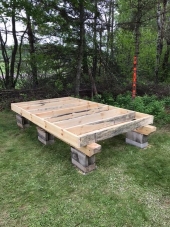
 3
3




 3
3




Invasive plants are Earth's way of insisting we notice her medicines. Stephen Herrod Buhner
Everyone learns what works by learning what doesn't work. Stephen Herrod Buhner
 2
2




"When the whole world is running towards a cliff, he who is running in the opposite direction appears to have lost his mind." C.S. Lewis
Visit https://themaineingredient.com for organic, premium dried culinary herbs that are grown, processed, and packaged in the USA.
 2
2




 2
2




Nothing ruins a neighborhood like paved roads and water lines.
 1
1




 1
1




- this is a good point and I have considered it, but I found that germination and seedling life outside has been really challenging. I've attributed it most to my soil, and like to be able to grow more seedlings and then transplant the best ones/give some away to neighbors. But to your point maybe a cold frame for seed starting directly outside is something to try too. More to think through!
Invasive plants are Earth's way of insisting we notice her medicines. Stephen Herrod Buhner
Everyone learns what works by learning what doesn't work. Stephen Herrod Buhner




“We can complain because rose bushes have thorns, or rejoice because thorn bushes have roses.” — Abraham Lincoln

|
They gave me pumpkin ice cream. It was not pumpkin pie ice cream. Wiping my tongue on this tiny ad:
The new permaculture playing cards kickstarter is now live!
https://www.kickstarter.com/projects/paulwheaton/garden-cards
|





